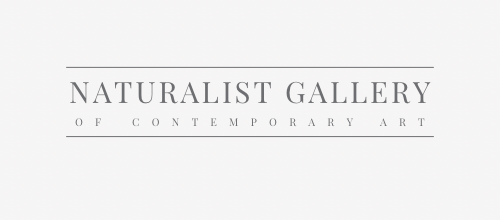Portraiture, the artistic representation of an individual, has traversed a fascinating journey from its classical roots to the digital age.
The evolution of portraiture spans from the noble, realist paintings of the Renaissance to today’s digital avatars and selfies, reflecting societal shifts and technological innovations that influence self-expression and identity.
Beginning as a tool for immortalizing the elite, it evolved into a platform for broader societal expression, embracing new technologies and reflecting shifts in cultural and artistic movements. This transformation, spanning centuries, demonstrates how portraiture continues to mirror the human experience, identity, and societal changes.
Explore our curated selection of contemporary artists from around the globe.
Naturalist Gallery offers artist representation internationally. Apply your art.
Classical Portraiture: The Noble Beginnings
Self-portrait of Nicolas Régnier painting a portrait of Vincenzo Giustiniani, 1623–24, Fogg Art Museum.
In its early stages, portraiture was a symbol of power and status. Ancient civilizations like Egypt and Greece commissioned portraits to immortalize rulers and deities. By the Renaissance, artists like Leonardo da Vinci and Raphael perfected portraiture, combining realism with emotional depth to capture not only physical likeness but also the soul of the subject. The Mona Lisa remains a quintessential example of this era, portraying an enigmatic, introspective expression that continues to intrigue viewers. Artists in the Baroque period, such as Rembrandt, advanced this tradition by adding dramatic light and shadow (chiaroscuro) to emphasize emotion.
Photography and the Democratization of Portraiture
Cameron in 1870
The invention of photography in the 19th century revolutionized portraiture, making it accessible to the masses. Early photographers like Julia Margaret Cameron proved that photography could evoke as much artistry and depth as painting. As the medium evolved, artists like Diane Arbus and Richard Avedon used photography to explore more raw, unfiltered aspects of their subjects, moving beyond physical likeness to reveal deeper societal narratives. Photography’s rise helped democratize portraiture, giving individuals from all social classes the ability to record their images.
Digital Portraiture: A New Era of Self-Expression
VRChat screenshot
In the digital age, portraiture expanded to new horizons. Digital tools like Photoshop and AI-enabled platforms allow artists to manipulate images in ways unimaginable to classical artists. Digital avatars, for instance, have blurred the line between reality and representation, offering entirely new possibilities for self-expression. With social media, portraiture is no longer the domain of professional artists but has become a universal activity through selfies and digital representations, giving everyone a platform to curate their identity. Augmented reality (AR) and virtual reality (VR) further push the boundaries of how we represent and interact with portraits.
Portraiture remains one of the most enduring art forms, evolving from the exclusive world of classical art to a digital realm accessible to all. As technology continues to advance, we can expect even more innovation in how portraits are created and perceived, but the essence remains the same: capturing the human condition and reflecting society’s shifting values.
Learn more About Naturalist Gallery of Contemporary Art.
You may also find the following articles helpful:
The 14 Essential Artists of Impressionism
Expressionism: 20 Iconic Paintings & Their Artists
Renaissance Art: Origins, Influences, and Key Figures
Classical Art Movement: Exploring the History, Artists, and Artworks
Figurative Art: Understanding, Collecting, and Appreciating the Style
Daily Routines of Famous Artists: Learn from the Masters
Top 12 Controversial Artworks That Changed Art History





